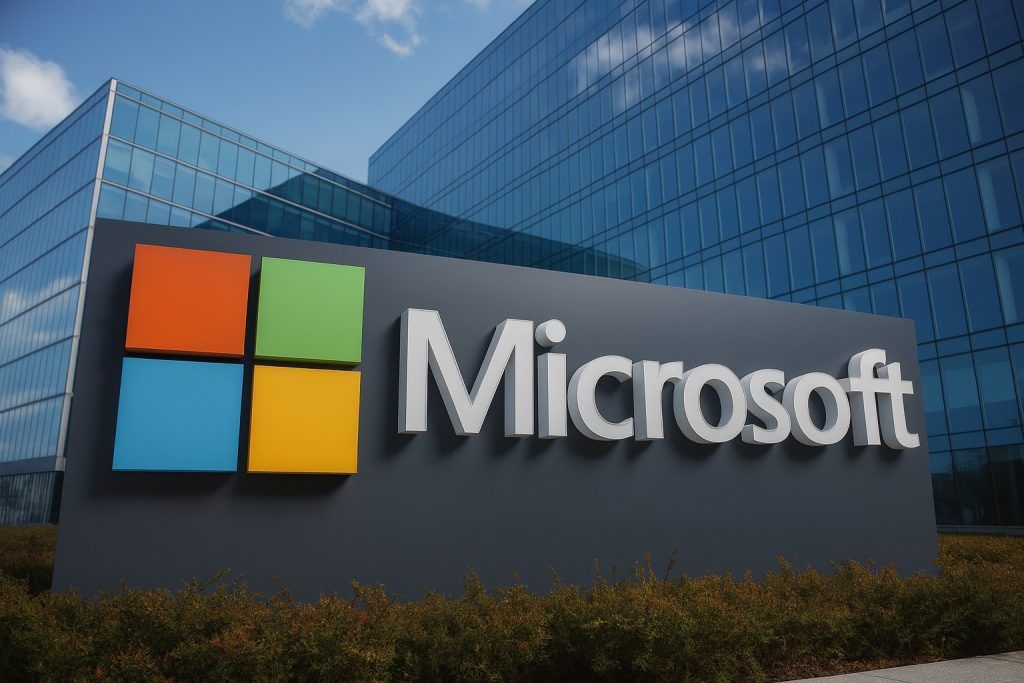Key Facts: MP Materials (NYSE: MP) closed at $64.29 on Oct. 29, 2025 [1], after retreating from mid-October highs. The stock has soared roughly 300–380% YTD (from about $15 in January to the $60–70 range) [2] [3]. It traded as high as $100.25 in mid-October (52-week range ~$15.6–$100), but recent U.S.–China trade news sent it back to the mid-$60s. MP’s huge 2025 gains reflect a string of catalysts: a $400M U.S. Defense Dept. investment (for ~15% equity) with a $150M loan and guaranteed rare-earth magnet offtake [4], plus a $500M deal to supply Apple with rare-earth magnets [5]. Those deals helped the stock surge 20% on the Apple announcement [6]. In contrast, recent concerns over a U.S.–China trade truce (delaying tariffs and export curbs) led MP shares to fall ~7% on Oct. 27 [7] [8]. Analysts remain mostly bullish: MarketBeat shows a “Moderate Buy” consensus with a 12-month average target of $77.80 (up ~21% from current) [9], though price targets range $64–$112 [10].
Stock Performance & Recent Trading
After rocketing higher all year, MP’s stock has moderated recently. It hit multi-year highs in mid-October but pulled back as news of a U.S.–China deal surfaced. Data from Nasdaq shows MP closed $65.57 on Oct. 27, then $64.94 on Oct. 28 and $64.29 on Oct. 29 [11]. Intra-day Oct. 27, MP fell about 7.4% [12] when reports emerged that China would likely maintain rare-earth export curbs. (Analysts note MP’s shares have climbed nearly fourfold this year thanks to U.S. policy support [13].) By early Oct. 30, MP was trading in the mid-$60s – roughly flat on the day – as investors digested the latest trade news.
MP’s volatility has been extreme: for example, in mid-October the stock briefly exceeded $90 (intraday peak $100.25 on Oct. 14) [14], before sliding on profit-taking. Over the past month the 30-day trading range has spanned roughly $62–$100 (50-day moving average was near $69.60, 200-day ~$44.60 as of mid-October [15]). Volume data on Oct. 27 shows a surge (24.7M shares) as the stock fell 7.4% [16], suggesting strong investor reaction to the trade news. In recent weeks MP has underperformed the broader market; for instance, after quarterly results in August its stock fell even as the S&P 500 rose [17].
Financially, MP is still unprofitable (it reported a Q2 loss of $0.13 per share) but has rapidly grown revenue. In Q2 2025, revenue jumped 84% year-over-year to $57.4 million, driven by a 119% surge in NdPr oxide production [18]. Production is ramping: Q2 NdPr output was 597 tonnes [19]. (NdPr oxides are the raw materials for neodymium-iron-boron magnets.) Most analysts focus on growth and policy drivers rather than P/E: the stock trades at a negative P/E due to losses, so valuation is often discussed in terms of price-to-sales or future potential.
Major News and Catalysts
Several big developments underpin MP’s story. In July 2025 the U.S. Department of Defense made a landmark investment in MP: $400 million for about 15% equity, plus a $150 million loan. This deal established a guaranteed $110/kg price floor for NdPr (well above China’s historical price) and secured magnet purchase agreements [20]. Shortly after, MP announced a $500 million contract with Apple to supply rare-earth magnets for electric vehicles and other devices [21]. Reuters reported that after Apple’s deal was announced, MP’s shares “soared by a fifth” [22]. Combined with the DoD backing, these deals have dramatically lifted MP’s profile: its stock “nearly doubled” in the weeks after the Pentagon deal [23].
More recently, the focus has shifted to U.S.–China trade dynamics. In early October, China expanded export controls on rare-earth metals (adding five more elements and stricter licensing) [24]. This news briefly boosted MP’s shares (up ~8% on Oct. 9) because it signaled tighter global supply [25] [26]. However, in late October U.S. and Chinese leaders announced a trade truce. On Oct. 30, President Trump and President Xi agreed at an Asia-Pacific summit to pause China’s new rare-earth export curbs for one year, and the U.S. dropped threatened tariff hikes [27] [28]. In Al Jazeera’s words, Trump said the rare-earths issue was “settled” and Xi’s government confirmed a one-year deferral of the curbs [29] [30]. This move was intended to “ease pressure” on global supply chains [31].
Market Reaction and Expert Commentary
Investors have reacted strongly to these geopolitical shifts. Rare-earth mining stocks tumbled in late October when news broke that China would delay removing its export curbs. Seeking Alpha notes, “China has paused its plans to significantly expand rare-earth export controls… Export controls announced on Oct. 9 will be suspended for one year” [32]. On Oct. 27 alone, MP fell about 8% while peers like USA Rare Earth fell 10% [33]. By contrast, broad markets climbed as the trade deal reduced tariffs.
Experts see both risks and opportunities. Benchmark Minerals analyst Neha Mukherjee warns that the U.S. and China are entering “a period of structural bifurcation” – China will localize its rare-earth supply chain while the U.S. accelerates its own [34]. Tim Zhang of Edge Research notes the timing: China’s curbs were “increasing leverage for Beijing ahead of the anticipated Trump-Xi summit” [35]. Other analysts are more sanguine: technical indicators rate MP a “strong buy” short-term (per TradingView data) and note it remains well above its long-term trend [36]. Geopolitical experts say the trade truce is essentially “a pause and a small rollback in the trade war,” not a permanent solution [37].
Within the rare-earth sector, some analysts have quibbles. A few price targets (e.g. from small firms) are below today’s levels (as low as ~$64 [38]), implying limited near-term upside. But the consensus is broadly positive: MarketBeat finds a “Moderate Buy” consensus, with an average 1-year target around $77.80 [39] (implying ~20% upside). Wall Street ratings range from hold to strong buy [40]. The divergence reflects uncertainty: one analyst may see risks if demand slows, while another bets on long-term rare-earth scarcity and U.S. policy support.
Macroeconomic and Industry Factors
The rare-earth sector’s fortunes are tightly tied to global policy and tech trends. MP’s products (neodymium-praseodymium oxides and magnets) are critical for electric vehicles, wind turbines, smartphones, and defense systems [41]. China still dominates the industry – about 70% of world mine output and ~90% of refined rare-earths [42] [43]. U.S. policy is shifting: after years of reliance on China, Washington is treating rare-earths as a strategic priority. In fact, MP’s U.S. mine is the country’s only large-scale rare-earth production and processing site [44]. Analysts note that building a U.S. supply chain will take years, but government “floor pricing” and investment have provided a clearer market outlook [45] [46].
Electric vehicle demand looms large. Industry forecasts envision massive growth in EVs (potentially 5× demand for NdPr by 2033 [47]), which would drive rare-earth magnet sales higher. Meanwhile, Western governments are pursuing supply security: the U.S. plans new mines, processing facilities, and international deals (e.g. U.S.–Australia critical-minerals framework [48]). However, as DiscoveryAlert and Reuters point out, Chinese state backing and expertise remain formidable [49] [50]. In short, MP sits at the center of a geopolitical tug-of-war. Its valuation and outlook depend not only on company execution but on global trade policy and the pace of renewable-energy transitions.
Outlook: Short-Term vs. Long-Term
Short-term, MP’s stock will likely be driven by further trade developments and investor sentiment. The recent trade deal removes an immediate cloud (rare-earth export curbs are on hold), which could support a bounce from late-October lows. Technical charts suggest support near the low-$60s and resistance around $70–75 (recent pivot points). Some traders may buy the dip: for example, trading platforms currently label MP a “strong buy” in the short run [51]. On the other hand, uncertainty remains – if U.S.–China relations turn sour again, or if China re-imposes curbs after a year, MP could see renewed volatility. Analysts caution not to assume permanent normalization. In fact, Washington Post and Al Jazeera commentaries stress that the truce is temporary: Trump himself said the rare-earth deal will “have to be renewed annually” [52] [53].
Long-term, most experts remain optimistic on MP’s prospects. If global EV production and clean-energy deployments proceed as expected, NdPr magnets will be in ever-greater demand. MP’s expansion (including a new Texas magnet plant) aims to capture that demand. The company’s unique position – the only large U.S. mine and integrated rare-earth facility – gives it strategic value. Over years, analysts expect fundamental forces to dominate: limited Chinese processing capacity means a premium on U.S. supply. Indeed, industry analyst Nicholas Myers notes that big government investments “de-risk” the sector and encourage further projects [54]. Reflecting this, the average 2025–26 price targets are well above current levels (median ~$79 [55]). If MP executes its output ramp, it could justify higher multiples than today’s levels.
In summary, MP Materials is a volatile, high-beta play tied to rare-earth geopolitics and technology trends. Recent expert sentiment is mixed: short-term traders may stay cautious after the recent pullback, but many longer-term investors see a structural bull market. As one analyst put it, today’s developments are “a pause” but Washington and Beijing are still armed with trade weapons [56]. Investors are watching closely: if U.S. policies (and global EV growth) stay on track, MP’s fundamentals could continue to strengthen, but any reversal in the rare-earth agenda could quickly pressure the stock.
Sources: Authoritative financial news and data were used, including Reuters [57] [58], FinancialContent (Nasdaq) quotes [59], analysis from MarketBeat [60] and NASDAQ/Zacks [61] [62], plus industry reports [63] [64] and market commentary [65] [66]. These provide the basis for the above analysis and forecasts.
References
1. markets.financialcontent.com, 2. ts2.tech, 3. www.reuters.com, 4. ts2.tech, 5. www.reuters.com, 6. www.reuters.com, 7. www.tipranks.com, 8. markets.financialcontent.com, 9. www.marketbeat.com, 10. www.marketbeat.com, 11. markets.financialcontent.com, 12. markets.financialcontent.com, 13. www.reuters.com, 14. markets.financialcontent.com, 15. ts2.tech, 16. markets.financialcontent.com, 17. www.nasdaq.com, 18. www.nasdaq.com, 19. www.nasdaq.com, 20. ts2.tech, 21. www.reuters.com, 22. www.reuters.com, 23. www.reuters.com, 24. www.reuters.com, 25. www.reuters.com, 26. ts2.tech, 27. www.aljazeera.com, 28. www.washingtonpost.com, 29. www.aljazeera.com, 30. www.washingtonpost.com, 31. www.aljazeera.com, 32. seekingalpha.com, 33. www.tipranks.com, 34. www.reuters.com, 35. www.reuters.com, 36. ts2.tech, 37. www.aljazeera.com, 38. www.marketbeat.com, 39. www.marketbeat.com, 40. www.marketbeat.com, 41. ts2.tech, 42. ts2.tech, 43. www.reuters.com, 44. ts2.tech, 45. ts2.tech, 46. discoveryalert.com.au, 47. discoveryalert.com.au, 48. discoveryalert.com.au, 49. discoveryalert.com.au, 50. www.reuters.com, 51. ts2.tech, 52. www.aljazeera.com, 53. www.washingtonpost.com, 54. discoveryalert.com.au, 55. www.marketbeat.com, 56. www.aljazeera.com, 57. www.reuters.com, 58. www.reuters.com, 59. markets.financialcontent.com, 60. www.marketbeat.com, 61. www.nasdaq.com, 62. www.nasdaq.com, 63. ts2.tech, 64. www.reuters.com, 65. www.tipranks.com, 66. www.reuters.com









